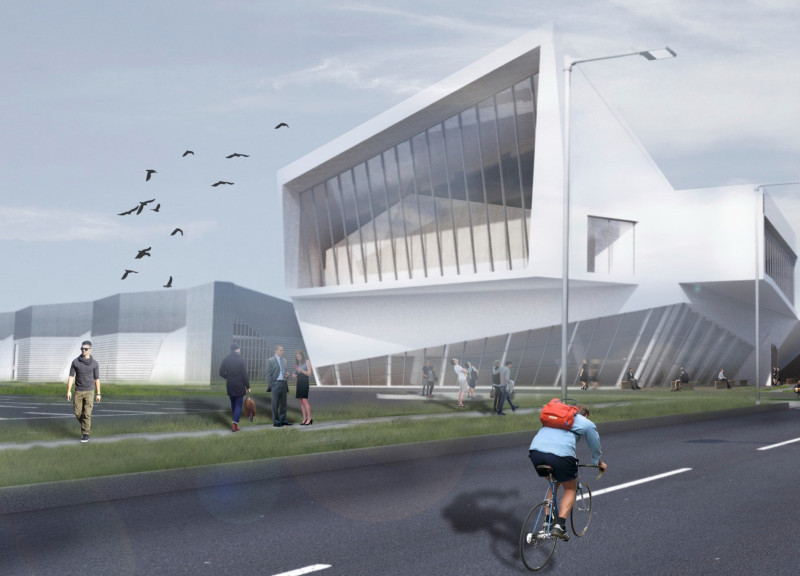5 key facts about this project
At its core, the Kip Island Auditorium is designed to host a range of activities, including performances, conferences, and community events. This versatility is essential for its function as a gathering space, making it accessible and relevant to people of all ages and backgrounds. The project emphasizes the importance of public interaction, encouraging a vibrant atmosphere where creativity and expression can flourish.
The architectural design of the auditorium is characterized by a unique approach to form and materials. The building features dynamic facades that are composed of large expanses of glass, promoting transparency and a visual connection between the interior and the exterior. This choice not only allows natural light to pour into the spaces but also invites the surrounding environment into the building, blurring the boundaries between indoor and outdoor activity. The use of recycled wood throughout the project reflects a commitment to sustainability, while concrete provides the necessary structural support, ensuring longevity and durability.
One notable aspect of the design is the elevation and tilting of the auditorium volumes. This strategy facilitates optimal light exposure within the interior spaces, while also providing spectacular views of the adjacent Daugava River. The incorporation of green roofs and solar panels indicates a forward-thinking approach towards energy efficiency and environmental responsibility. Such features are integral to modern architectural practices that seek to minimize ecological impact.
The plan of the auditorium involves an intricate spatial organization consisting of distinct yet interconnected areas. Various auditoriums are interspersed with public amenities, administrative offices, and flexible conference spaces. This layout not only allows for efficient circulation but also nurtures spontaneous interactions among visitors, fostering a sense of community within the building. An outdoor plaza complements the design, serving as a vibrant social space that draws people in, encouraging gatherings and public events.
In terms of unique design elements, the incorporation of a perimeter catwalk around the auditoriums enhances the overall experience of the building. This feature promotes exploration, encouraging visitors to engage with the architecture itself. The playful geometry of the facades further adds an architectonic richness, effectively engaging the passerby and generating interest in the activities within.
The geographical location of Kip Island plays a significant role in the project’s conceptual framework. The auditorium is strategically situated to serve as a connector between different parts of Riga, enhancing the accessibility of cultural resources. The design is carefully oriented to maximize views of the river and the cityscape, providing a scenic backdrop for both users and the urban context.
This architectural project is a testament to a balanced approach to design, achieving functionality while maintaining aesthetic integrity. The Kip Island Auditorium stands as a crucial asset to the city's cultural scene, encapsulating ideas that resonate with both the community's needs and environmental considerations. Those interested in exploring the architectural plans, sections, and other design details are encouraged to delve deeper into this project to appreciate its comprehensive approach and thoughtful execution. The unique features and sustainable practices embedded within the design reflect a commitment to creating a meaningful space that aligns with contemporary architectural ideals and community aspirations.


























